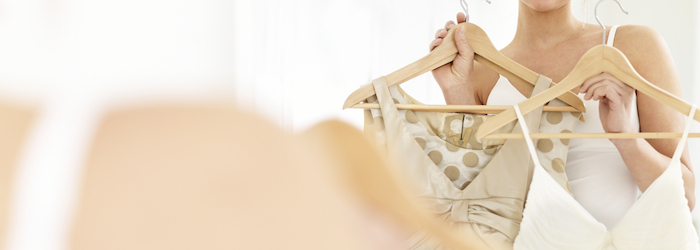What Colour Clothes To Wear

What do your clothes say about you? Find out how changing your colours can change your life
Colour has been used for thousands of years to represent an individual’s mental and emotional state. The colours that we surround ourselves with provide an insight and allow for a deeper exploration into the inner self. Colour has power. It can stimulate or sedate, excite or calm, irritate or bring pleasure, generate feelings of passion or uplift us spiritually. Colour can transform our environment and increase productivity. It can enhance our social life, and improve our state of health. It can be used to develop our self-awareness and make us more fully alive and more colourful human beings.
Colour for Clothes
Clothes allow you to express yourself through your choice of colour. But with literally thousands of colours available to us, it is easy to become confused about the colours that best represent your true self. Colour for its own sake leaves us feeling disorientated and out of touch with ourselves, becoming merely a tool to cover up, hide, manipulate or stimulate attention for the wrong reasons. Colour can, on the other hand, be used productively and constructively if you understand its psychological effects.
Red
This colour makes you feel more energetic, outgoing and ready to move forward in some overt way. If you wear red you may wish to be seen as having fire and passion, ferocity and strength. Wearing red can also denote a strong sexuality.
Orange
An energetic and stimulating colour, it doesn’t have quite the same ‘push’ as red. If you’re fond of wearing orange you may have a courageous and adventurous streak, showing enthusiasm and zeal in whatever you do, even if it draws on your energy. People who wear this colour are assertive and like to smile and make others smile. Wearing orange also encourages conversation and a sense of humour.
Yellow
This colour is often worn by intellectuals, the studious and those who like to be in positions of authority and control. It encourages open-mindedness and attention to detail. Wearing yellow ‘brings in the light’. It is the colour mostly associated with the sun and tends to generate positive and optimistic qualities in those who wear it.
Green
This colour helps people to create calm, soothing and balancing atmospheres around them. It stands for harmony and equilibrium. Green in clothes tends to reflect the conventional types, those who like to stick to the straight and narrow and who prefer not to stand out in a crowd. Those who like this colour usually appreciate nature and the security it brings.
Turquoise
This colour encourages people to show an interest in you. It stimulates a quiet, refreshing personality who is easily approachable. It helps you to be clear in your thoughts and your feelings, generating clarity in your communication. If you like to wear turquoise you may wish to be seen as having youthfulness and sparkle.
Blue
Wearing blue suggests spirituality and order. Those who wear it reflect a wish for peace and quiet, tranquillity and even solitude. It is a non-threatening colour and the individual who wears it probably values loyalty and honesty.
Violet
Wearing violet generates feelings of self-respect, dignity and self-worth. It is a colour worn by Catholic priests to reflect sanctity and humility. Because of its richness, it is also associated with the monarch, extravagance and wealth. Many artists favour this colour in clothes, perhaps because of its creative or spiritual qualities.
Magenta
Wearing this colour generates feelings of softness, gentleness and kindness. It creates affection and feelings of love and compassion. Because of the red contribution to creating this colour it also generates a powerful sexual message, which can be subtly manipulative. If you like wearing this colour it could be because you wish to express your sensuality.
Black
In most Western societies, black is almost universally the colour of death, grief and penitence. It is often worn by those who reject society or rebel against the norm within society. It is a colour which denies the light and those who wear it reject the light in themselves, by pushing it away and not allowing it to be absorbed. It is the colour worn by professionals, policemen and priests to reflect power and authority. Black is accepted as being dark and mysterious and has also come to mean sexy. Yet black is also for those who like to appear traditional and respectable.
White
In clothes white has been associated with cleanliness, purity and innocence. In the East, white is worn as the colour appropriate for death and mourning, accepting that the deceased has departed the physical world for the purer, spiritual one. White is the colour of detachment. White reflects all colour and those who wear it may do so to keep themselves cool in the heat of the sun’s rays.
Brown
The colour brown is often associated with the earth and with stability. To create brown you need the colour red mixed with black. Therefore it has many of their attributes. Brown is a colour concerned with groundedness and building firm foundations for the future (similar to that of positive red). It also contains the powerful quality of black in that it relates to authority, inner confidence and self-assuredness. A person who likes to wear brown is likely to be highly dedicated and committed to their work, family and friends. On the positive side, they are practical and materialistic in life. But on the negative, they can be deeply insecure and unstable. The colour brown generates being organised and steadfast, especially in day-to-day responsibilities. Those who like the colour brown are able to get to the ‘root’ of things and deal with complicated matters simply and directly. They are ‘no-nonsense’ people.


